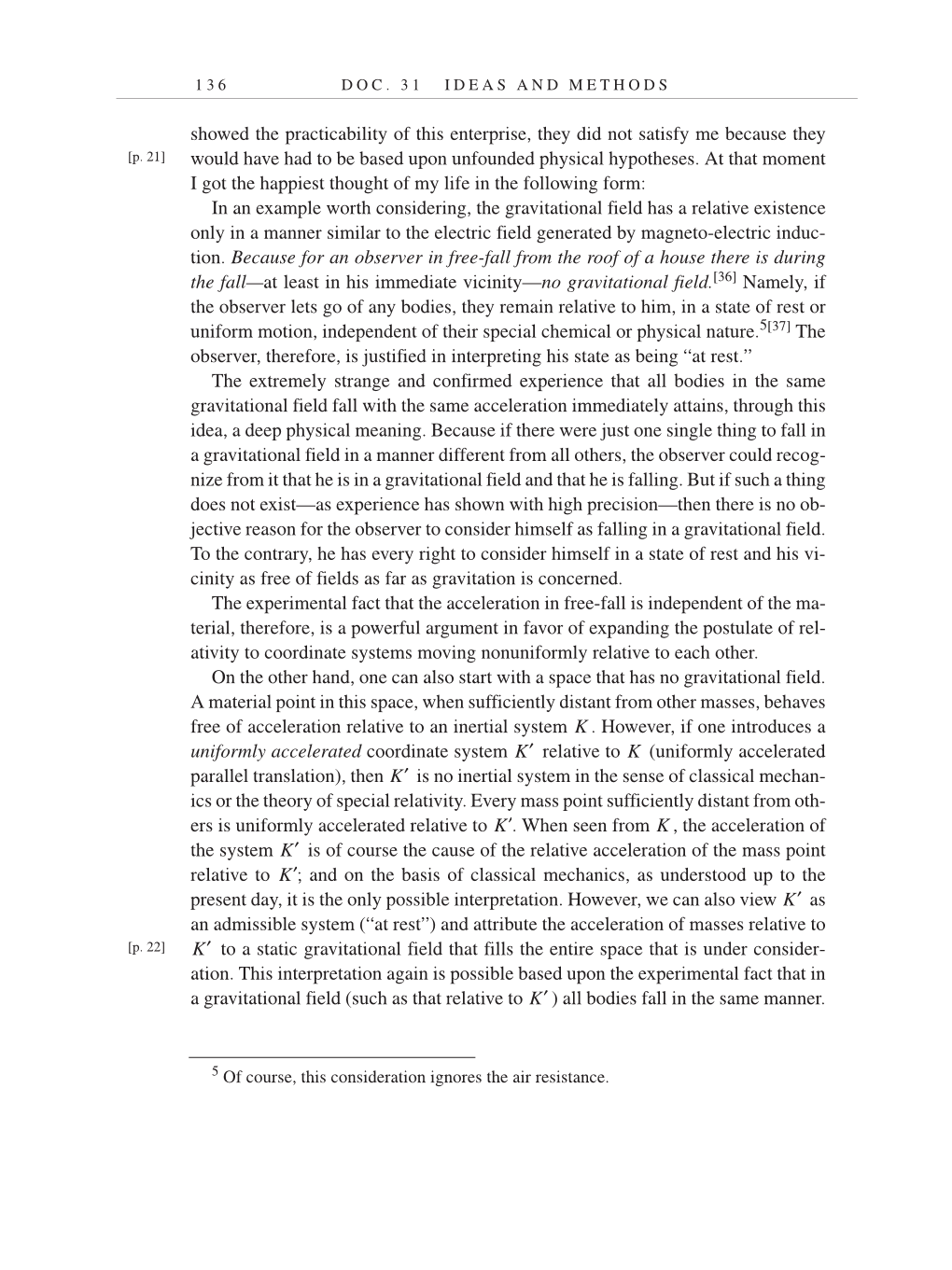1 3 6 D O C . 3 1 I D E A S A N D M E T H O D S
showed the practicability of this enterprise, they did not satisfy me because they
would have had to be based upon unfounded physical hypotheses. At that moment
I got the happiest thought of my life in the following form:
In an example worth considering, the gravitational field has a relative existence
only in a manner similar to the electric field generated by magneto-electric induc-
tion. Because for an observer in free-fall from the roof of a house there is during
the fall—at least in his immediate vicinity—no gravitational
field.[36]
Namely, if
the observer lets go of any bodies, they remain relative to him, in a state of rest or
uniform motion, independent of their special chemical or physical
nature.5[37]
The
observer, therefore, is justified in interpreting his state as being “at rest.”
The extremely strange and confirmed experience that all bodies in the same
gravitational field fall with the same acceleration immediately attains, through this
idea, a deep physical meaning. Because if there were just one single thing to fall in
a gravitational field in a manner different from all others, the observer could recog-
nize from it that he is in a gravitational field and that he is falling. But if such a thing
does not exist—as experience has shown with high precision—then there is no ob-
jective reason for the observer to consider himself as falling in a gravitational field.
To the contrary, he has every right to consider himself in a state of rest and his vi-
cinity as free of fields as far as gravitation is concerned.
The experimental fact that the acceleration in free-fall is independent of the ma-
terial, therefore, is a powerful argument in favor of expanding the postulate of rel-
ativity to coordinate systems moving nonuniformly relative to each other.
On the other hand, one can also start with a space that has no gravitational field.
A material point in this space, when sufficiently distant from other masses, behaves
free of acceleration relative to an inertial system . However, if one introduces a
uniformly accelerated coordinate system relative to (uniformly accelerated
parallel translation), then is no inertial system in the sense of classical mechan-
ics or the theory of special relativity. Every mass point sufficiently distant from oth-
ers is uniformly accelerated relative to When seen from , the acceleration of
the system is of course the cause of the relative acceleration of the mass point
relative to and on the basis of classical mechanics, as understood up to the
present day, it is the only possible interpretation. However, we can also view as
an admissible system (“at rest”) and attribute the acceleration of masses relative to
to a static gravitational field that fills the entire space that is under consider-
ation. This interpretation again is possible based upon the experimental fact that in
a gravitational field (such as that relative to ) all bodies fall in the same manner.
5
Of course, this consideration ignores the air resistance.
[p. 21]
K
K′ K
K′
K′. K
K′
K′;
K′
K′
[p. 22]
K′
